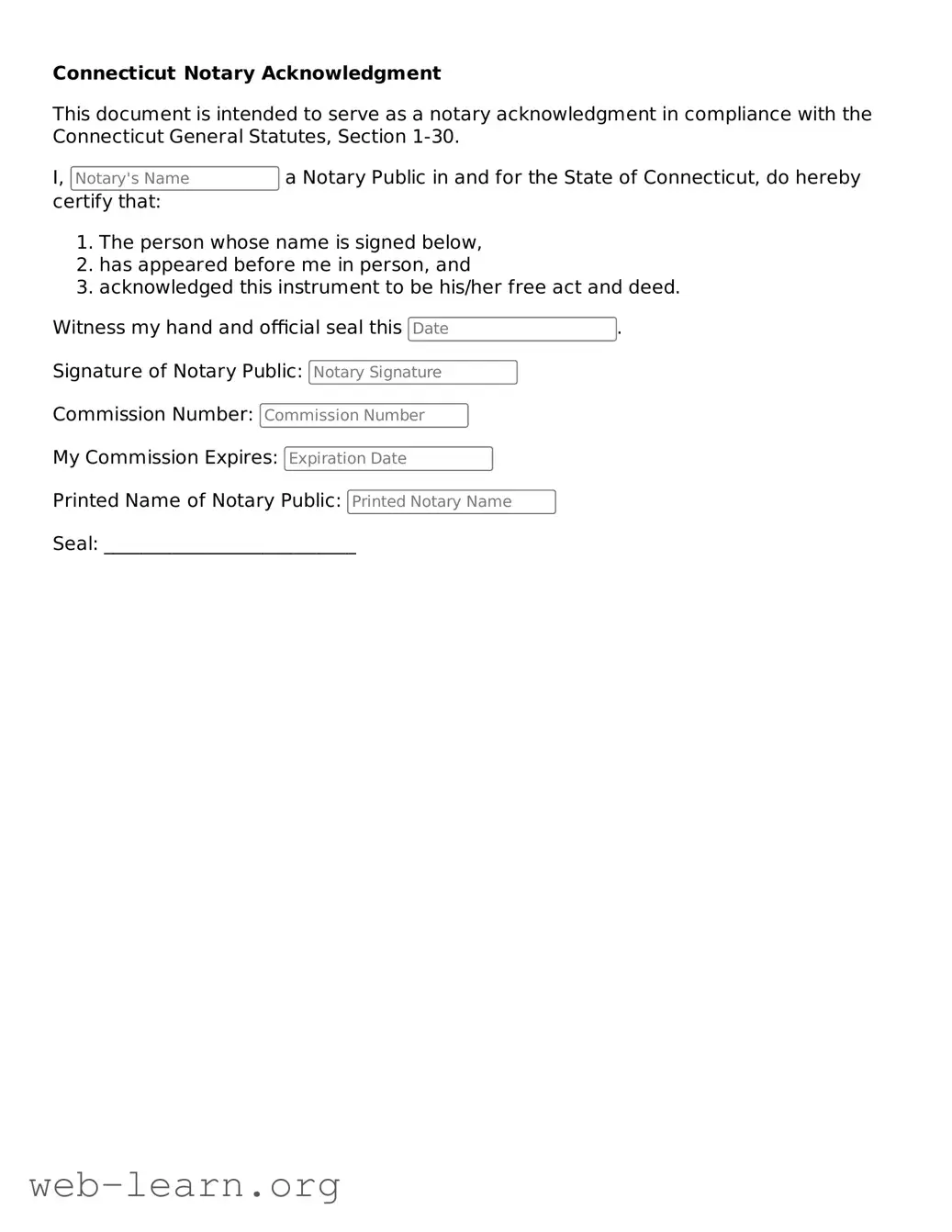Attorney-Approved Notary Acknowledgement Document for the State of Connecticut
The Connecticut Notary Acknowledgement form is a legal document used to confirm that an individual personally appeared before a notary public and acknowledged signing a particular document. This form ensures that the identity of the signer is established and that they acted voluntarily. Understanding the process and requirements is essential for valid notarization in Connecticut.
